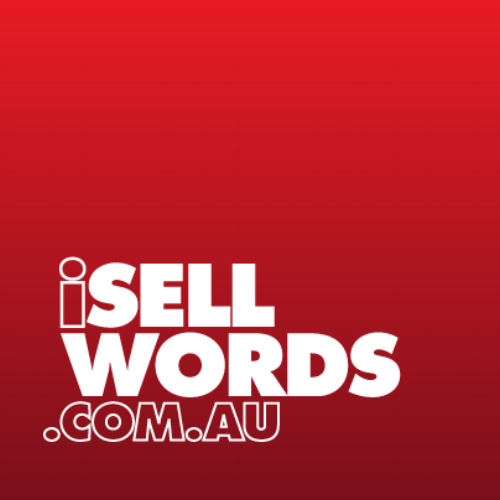Marketing is digital and digital changes a lot over 12 months. This time last year marketers were bracing for a collapse in ad spend. Analysis from AdWeek predicts that ad spends will increase around 3.8% to 6.5% which is a good sign for people in marketing and communication - though growth in the industry will languish around the 2-3% mark.
So what is the state of marketing in 2025? What should we be focusing on for this year instead of succumbing to shiny-object syndrome? Here’s my analysis:
FTA Television is Boomer Wasteland
Back in ‘68 when Julie was Johnny’s date and strolling down Desolation Boulevard, both of them were likely eighteen. Julie and Johnny, now retired empty nesters with three investment properties are watching old school, free-to-air television. The kids are alright with over-the-top streaming and the internet, and we’ve known this since 2017. In the U.S., 49% of the 54-65 and over demographic still have a cable subscription and most watch over 10 hours per week, constrasted with only 34% of the 18 to 29 demo. The highest rated programs are still live sports, seconded by news and … repeats of Antiques Roadshow.
This has contributed to a global decline in TV advertising by 8%. If you’re trying to get hip and down with the kids, avoid FTA TV and leave it to the oldies.
Social Media Fragmentation
Ahh, the halcyon days of the mid 2010s - where you could set your watch to a healthy return on ad spend coming from Facebook, Instagram, and Twitter. Now, that’s all been turned on its ear. Since the takeover of Twitter by Elon Musk and its rebrand to X, many left-leaning netizens have flocked to alternatives such as Mastodon and Blue Sky citing safety and misinformation concerns.
Meta CEO Mark Zuckerberg has drawn ire from the political left for doing away with fact checking units and opting for community based notes, much like on X. TikTok’s status in the United States is also under a cloud of uncertainty with a ban likely coming after the U.S. Supreme Court hands down its ruling on the 19th of January.
Couple that with a decrease in ads capturing attention - 31% of people globally claim they pay attention to ads, a 12% slump over last year - and social media seems a less of a “sure thing” for marketers than any time in its short history.
Video and User Generated Content Pushes Buying Decisions
Hands up those of you who have watched a YouTube video of a product unboxing or review to reaffirm your decision to buy? You aren’t alone. According to Hubspot research, approximately 62% of consumers watch videos to learn more about brands, discover how their products or services work, and glean insights into hidden benefits in real-world use cases. (Like how I was sold on buying the Sony Xperia 1 VI due to its superb macro function. Oh, and the headphone jack.) During 2024, 89% of consumers said they want to see more videos from brands - especially if it justifies their purchase decisions.
Newsletters: CERTAINTY IN AN UNCERTAIN TIME
When you put out a newsletter, you not only enjoy a 42:1 average ROI, but you also own the channel and the all the benefits. There aren’t any algorithms to deal with or external advertiser guidelines to adhere to. With politicisation and cybersecurity threats still rampant on social media (e.g., a brand could lose its entire social media platform access overnight) cultivating a contact list and sending newsletters on one’s own terms lends brands and companies greater control over their marketing and communication efforts. It’s also wholly opt-in - first or zero party data collection when third-party data harvesting is starting to get on the nose (see below.)
Hubspot believes there will be a race for subscribers, with larger independents perhaps being acquired by media companies much like tech startups. However, it’s incumbent on us marketers to earn ongoing loyalty by providing value in each newsletter - value that entices non-subscribers to subscribe, too.
AI Driven Campaigns - Perhaps Not Content
AI slop is everywhere and people absolutely hate it. Though the U.S.S. Enterprise-D is run using a computer several magnitudes more intelligent than what we have today, it still has a full crew complement driving them into the Final Frontier. AI will be crucial in programmatic, on-the-fly advertising placement, even when regulation phases out third-party data and new innovative privacy-preserving ad platforms such as Anonym ensure security, transparency, and privacy for end-users.
Personalisation can generate $20 for each $1 spent. Overdo it, and you’re venturing into the creepy, “is this thing stalking me” territory for many - and people are growing even more uncomfortable with the phenomenon. This was highlighted after Apple was forced to pay US$95 million in a class action after their digital assistant Siri was caught eavesdropping on users.
With all that said, I can’t say Generative AI is completely useless - I generated the image at the top of the page using Midjourney - but after a re-evaluation by the marketplace, Generative AI may settle into a place of productivity co-pilot rather than taking over operations wholesale. This may lead to marketers deploying and scaling more simultaneous, continuous campaigns and not just gaining but implementing changes based on real-time data, as Large Language Models replace the need for coding or query language skills.
Digital PR: Continuous vs Discrete Reputation Management
Having a brand mentioned in a magazine simply doesn’t cut through anymore and thus a true innovation was required to supplant it. Instead of assuming influence like before, we can now quantify it and improve upon it. Digital PR isn’t just a simple add-on of the same old SEO mixed with traditional PR methods. It's all about rethinking how we tell stories for brands or people, tapping into the natural flow of information inherent in digital channels.
Sure, it’s awesome to see your brand in a newspaper, but let’s be real—it doesn’t really do much for your attention and reach in the long run. A link on your web page can boost your trust and authority for the long haul. Back in the day, PR was all about adding one bit of good news on top of another bit and hoping for the best. In the Digital PR era, it’s non-stop and endlessly measurable – and that’s what makes this new approach so appealing to marketers and brands.













